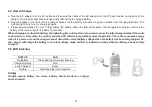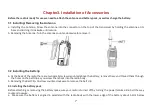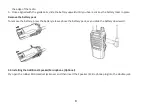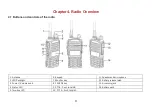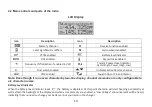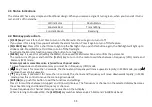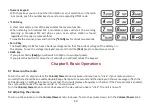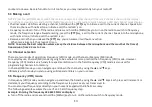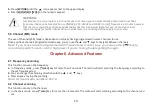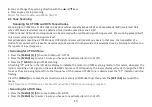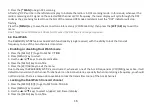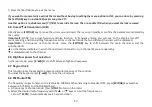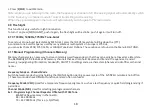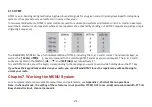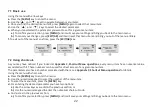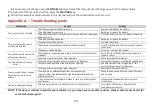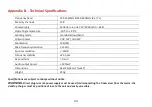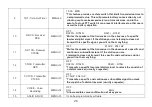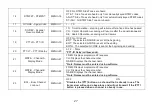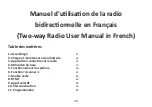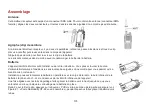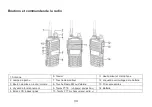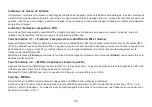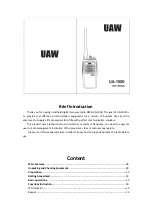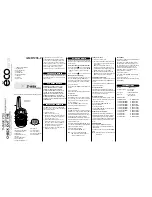
20
6.12 Repeaters Programming
The following instruc
�
ons assume that you know what transmit and receive frequencies your repeater employs, and that
you're authorized to use it.
a.
Turn o
ff
the radio, then press and hold the
[MENU]
key to turn on the radio and set it to VFO mode.
b.
Enter the repeater’s output (your receiving) frequency by either using the
▲
and
▼
keys, or by entering it directly on the
numerical keypad.
c.
Press the
[MENU]
key to enter the menu.
d.
Enter
[2][6]
on the numeric keypad to get to frequency o
ff
set.
e.
Press
[MENU]
key to select.
f.
Use the numerical keypad to enter the speci
fi
ed frequency o
ff
set. See the sec
�
on called “26 OFFSET - Frequency shi
�
amount” for details.
g.
Press
[MENU]
to con
fi
rm and save.
h.
Enter
[2][5]
on the numeric keypad to get to o
ff
set direc
�
on.
i.
Use the
▲
/
▼
keys to (posi
�
ve) or - (nega
�
ve) o
ff
set.
j.
Press
[MENU]
to con
fi
rm and save.
k.
Op
�
onal:
a). Save to memory, see the sec
�
on called “Manual programming” for details.
b). Set up CTCSS; see the sec
�
on called “CTCSS” for details.
l.
Press
[EXIT/AB]
to exit the menu. If everything went well, you should be able to make a test call through the repeater.
NOTE:
If you're experiencing problems making a connection to the repeater, check your settings and/or go through the procedure again.
Certain Amateur Radio repeaters (especially in Europe) use a 1750Hz tone burst to open up the repeater. To see how this is done
with the
Radioddity
GT-82
, see the
section
called
“1750Hz
Tone-burst”.
If you're still unable to make a connection, contact the person in charge of the radio system with your employer or your local amateur
radio club, as the case may be.
If you for some reason want to listen to the repeater's input frequency instead, press [*/SCAN] key momentarily and you'll reverse
your transmit and receive frequencies.
This is indicated in the LCD on the radio with an R in the top row, next to the + and - for the offset direction.

